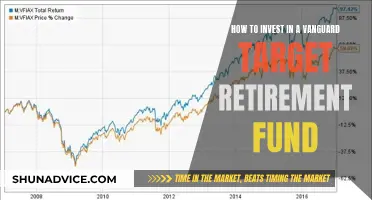
Investing in mutual funds can be a great way to grow your wealth, but it requires careful planning and informed decision-making. Mutual funds are investment vehicles that pool money from multiple investors, which is then managed by a fund manager and invested in a variety of assets. There are several ways to start investing in mutual funds, and the process has become increasingly simple and accessible. Here are the key steps to get started:
1. Complete your Know Your Customer (KYC) process: This is a mandatory one-time process for first-time investors, which can be done online or through a distributor or investment advisor. It requires submitting documents such as a PAN card and address proof to verify your identity and address.
2. Choose your investment method: You can invest in mutual funds directly or through a distributor. Direct investment can be done online via the websites of Asset Management Companies (AMCs) or through their mobile applications. Alternatively, you can invest through a financial intermediary, such as a registered mutual fund distributor, investment advisor, stock market broker, or bank.
3. Select the right mutual fund: Consider your financial goals, risk tolerance, investment horizon, and investment amount. Evaluate different types of mutual funds, such as equity, debt, and hybrid funds, and choose the ones that align with your objectives and risk appetite.
4. Understand the costs: Be aware of the various costs associated with investing in mutual funds, including management fees, exit loads, broker commissions, transaction charges, and selling costs.
5. Diversify your investments: Don't put all your eggs in one basket. Diversifying your portfolio across different funds and asset classes can help reduce risk and improve your investment outcomes.
6. Monitor and adjust: Regularly review the performance of your mutual fund investments and make adjustments as needed to maintain your desired asset allocation and achieve your financial goals.
| Characteristics | Values |
|---|---|
| First Step | Risk profiling to understand your risk tolerance and capacity |
| Second Step | Asset allocation, dividing your money between various asset classes |
| Third Step | Identify funds that invest in each asset class |
| Fourth Step | Select and decide the mutual fund scheme |
| Fifth Step | Diversify your investments |
| Investment Options | Online, Offline, Through Distributors, Through Advisors, Through Intermediaries |
| Online Investment Options | AMC Website, Mutual Fund Distributor Website, RTA Portals, Stockbroker Platforms, Bank Platforms, Mobile Apps |
| Offline Investment Options | Branch Office, Investor Service Centres (ISC), Registrar & Transfer Agents |
| Documentation | KYC, Aadhaar, PAN Card, Bank Statement, Passport, Utility Bills, Rental Agreements |

Risk profiling
Determine Your Risk Tolerance:
Firstly, you need to assess your risk appetite or tolerance. This is how much risk you are comfortable taking on. If you are nearing retirement, for example, you may want to opt for a lower-risk fund. Conversely, if you are younger, you may be able to tolerate more risk. Your risk tolerance is also influenced by your financial goals and current financial situation.
Understand the Risks Involved:
Mutual funds, like any investment, carry a certain level of risk. Schemes with high returns often come with higher risks. Equity schemes, for instance, tend to offer higher potential returns but carry a higher risk. On the other hand, debt schemes usually offer moderate returns with lower risk. It's important to understand the risk and return profile of the specific mutual fund products you are considering.
Diversify Your Portfolio:
Diversification is a key strategy to manage risk. By spreading your investments across different asset classes and types of mutual funds, you can reduce the overall risk. A well-diversified portfolio might include a mix of equity, debt, and hybrid funds. Equity funds carry a higher risk but offer higher potential returns, while debt funds focus on generating income with lower risk. Hybrid funds, meanwhile, diversify across multiple asset classes, providing the advantage of asset allocation and reducing investment risk.
Consult Professionals:
If you are unsure about your risk tolerance or how to assess the risks of different mutual funds, consider seeking advice from a financial advisor or a registered mutual fund distributor. They can help you evaluate your risk profile and choose funds that align with your risk tolerance and financial goals.
Monitor and Adjust:
Remember, risk profiling is an essential step to ensure that your mutual fund investments align with your financial goals, risk tolerance, and investment horizon. By understanding the risks involved and diversifying your portfolio, you can make more informed investment decisions and potentially enhance your investment returns.
Small-Cap Funds: When to Invest and Why
You may want to see also

Asset allocation
When allocating your assets, it is important to consider your investment goals, risk tolerance, and time horizon. If you are investing for retirement, for example, you may have a longer time horizon and be able to tolerate more risk in pursuit of higher returns. As a result, you might allocate a larger portion of your portfolio to stocks, which tend to provide higher returns over the long term but come with higher risk.
On the other hand, if you are investing for a shorter-term goal, such as a down payment on a house, you may have a more conservative approach to risk. In this case, you might allocate a larger portion of your portfolio to bonds or cash equivalents, which are generally lower-risk but also offer lower potential returns.
It is also important to consider the different types of assets available for investment. Here is an overview of some common asset classes:
- Stocks: Stocks, also known as equities, represent ownership in a company. They are typically considered higher-risk but also offer the potential for higher returns over time.
- Bonds: Bonds are a type of loan made to a company or government. They are generally lower-risk than stocks but also offer lower potential returns.
- Cash equivalents: This includes investments that can be easily converted to cash, such as money market funds or certificates of deposit. These are typically very low-risk but also offer low returns.
Once you have considered your investment goals, risk tolerance, and the types of assets available, you can begin allocating your funds across the different asset classes. It is important to regularly review and rebalance your portfolio to ensure that it remains aligned with your investment strategy and goals.
Additionally, it's worth noting that asset allocation is just one part of a comprehensive investment strategy. Other factors to consider include the specific investments you choose within each asset class, the fees and expenses associated with your investments, and the impact of taxes on your overall returns. Consulting with a financial advisor can help you navigate these considerations and develop an investment plan that is tailored to your needs and goals.
Smart Ways to Invest $25,000 in Mutual Funds
You may want to see also

Identify funds
Once you have determined your risk tolerance and asset allocation, it's time to identify the funds that invest in each asset class. You can then compare mutual funds by checking their past performance and investment objectives.
There are several ways to identify and select mutual funds. You can either do it yourself or seek help from a financial intermediary, such as a mutual fund distributor, registered investment advisor, stock market broker, or bank.
If you prefer to select the funds yourself, you can do so by visiting the nearest office of the fund house or through their website. Most Asset Management Companies (AMCs) have official websites that offer a range of mutual funds in each category. You can also invest through mobile applications provided by AMCs or third-party mutual fund aggregators.
When choosing a mutual fund, it is important to consider factors such as your investment goals, risk appetite, and affordability. You may also want to seek help from a financial advisor if you face difficulties in choosing the right fund.
Additionally, keep in mind that different types of mutual funds come with different risk factors. For example, equity schemes are typically associated with a higher risk and higher returns, while debt schemes offer moderate returns with lower risk.
Remember to ensure that your KYC (Know Your Customer) documents are up to date before investing in mutual funds. This is a mandatory process under the Prevention of Money Laundering Act, 2002, and its associated rules. You will need a valid PAN card and address proof to become KYC compliant.
Invest Wisely: Graphene Mutual Funds for Beginners
You may want to see also

Select a scheme
When selecting a mutual fund scheme, there are several factors to consider. Firstly, determine your financial objectives and investment horizon. Are you investing for retirement, a down payment on a property, or another goal? How long do you plan to invest for?
Secondly, assess your risk tolerance. If you are nearing retirement, you may want to opt for a lower-risk fund, whereas if you are younger, you may be able to tolerate more risk.
Thirdly, choose the type of mutual fund that aligns with your goals and risk appetite. There are various types of mutual funds, including equity, debt, and hybrid funds, each with its own risk and reward profile.
Next, decide between active and passive fund management. Actively managed funds aim to beat the market, while passively managed funds track a specific index. There are advantages and disadvantages to both approaches, so consider which aligns better with your investment strategy.
Check the performance of the funds you are considering. How have they performed over the years, and how do they compare to similar funds?
Analyse the expense ratio, which is the percentage of your investment that goes towards fees. A lower expense ratio means a larger proportion of your money is actively invested.
Check the liquidity and size of the fund. Larger funds tend to be more liquid, but they may also be more expensive.
Finally, assess the expertise of the fund manager. What is their track record, and do they have the necessary qualifications and experience?
Hedge Funds vs Investment Banks: Understanding the Key Differences
You may want to see also

Diversify investments
Diversifying your investments is a crucial aspect of successful investing. Here are some detailed tips to help you diversify your mutual fund portfolio:
Spread the Wealth
Diversification is about not putting all your eggs in one basket. Spread your investments across various asset classes, such as stocks, bonds, commodities, real estate, and exchange-traded funds (ETFs). Consider investing in a handful of companies you know well and trust, even if you use them in your daily life. Diversifying across sectors like pharmaceuticals, education technology, and information technology can also help mitigate risks associated with sector-specific fluctuations.
Consider Index and Bond Funds
Index funds and fixed-income funds can be excellent additions to your portfolio. Index funds, which track various indexes, offer long-term diversification with low fees. Fixed-income funds, meanwhile, further hedge your portfolio against market volatility and uncertainty.
Keep Building Your Portfolio
Regularly add to your investments. A strategy called dollar-cost averaging can help smooth out market volatility by investing the same amount of money over time. This reduces risk by buying more shares when prices are low and fewer when prices are high.
Know When to Get Out
While buying and holding, and dollar-cost averaging are sound strategies, it's important to stay informed about your investments and the overall market conditions. This will help you know when it's time to cut your losses and move on to your next investment.
Keep an Eye on Commissions
Understand the fees you are paying and what you are getting in return. Some firms charge monthly or transactional fees, which can eat into your profits. Be aware of any changes to your fees and consider the benefits of $0 commission-free trading offered by many online brokers for certain investments.
Expand Your Horizons
Look beyond traditional investments and consider allocating funds to commodities, real estate, and ETFs alongside equities.
Leverage Index Funds
Choose index funds that track prominent indexes, such as the Indian Nifty 50 or Sensex. These funds provide diversified exposure to top-performing companies at a minimal cost.
Embrace Systematic Investment Plans (SIPs)
Utilize SIPs to invest fixed amounts regularly in mutual funds. This approach cultivates a habit of regular saving and reduces the impact of market volatility through rupee cost averaging.
Consider Gold and Money Market Securities
Allocate a portion of your portfolio to gold and money market instruments like treasury bills (T-bills) and certificates of deposit (CDs). These assets provide stability, liquidity, and a hedge against market downturns, offering secure short-term investment options.
Explore Global Opportunities
Look beyond domestic markets and consider investing in international funds or ETFs focused on emerging markets or specific regions with growth potential. This reduces your dependency on a single market's conditions.
Rebalance Your Portfolio Regularly
Periodically review and rebalance your portfolio to maintain optimal asset allocation. Adjust your investments based on changing market conditions and your evolving investment goals, ensuring they remain aligned with your risk tolerance and financial objectives.
Understand Cultural and Financial Biases
Be mindful of how cultural influences and financial biases may impact your investment decisions. Evaluate your risk appetite, family attitudes, and cultural beliefs to make informed choices that align with your financial goals and market realities.
Incorporate Life Insurance
Consider investing in life insurance products such as unit-linked insurance plans (ULIPs), which combine insurance coverage with market-linked investments. Starting early can secure financial protection for your loved ones and provide exposure to equity markets.
Stay Informed
Educate yourself about factors influencing financial markets, including monetary policies, interest rates, and economic indicators. Staying updated on market trends and developments will help you make well-informed investment decisions.
Seek Professional Advice
Consult financial advisors or experts to develop a customized diversification strategy tailored to your circumstances and goals. Their guidance can help you navigate complexities and optimize your portfolio for long-term growth and stability.
Remember, diversification is a key component of risk management in investing. By spreading your investments across various asset classes, industries, and geographic regions, you can enhance stability and unlock the potential for long-term growth.
HDFC Mutual Fund: Offline Investment Guide
You may want to see also







